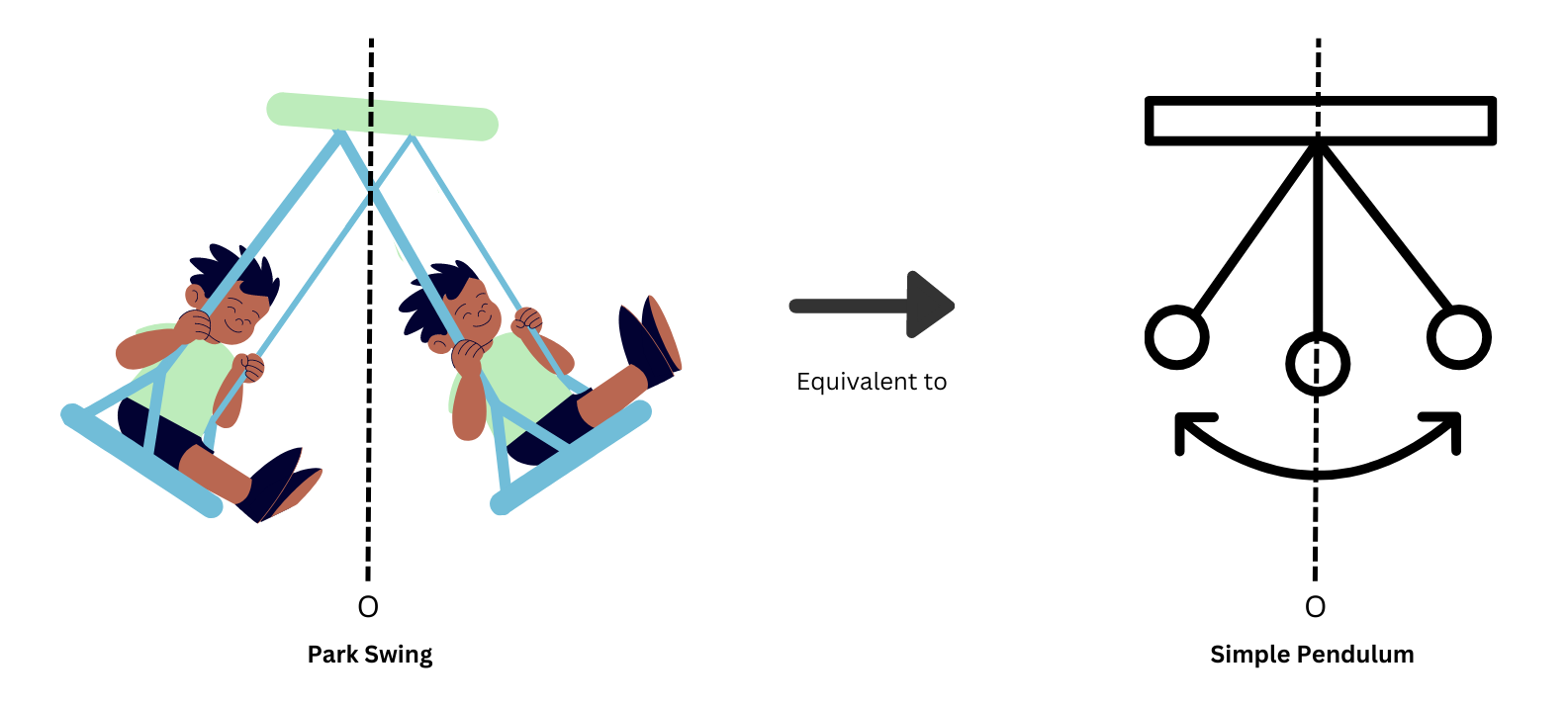4. You can perform an interesting activity when you visit a park to ride a swing. You will require a watch. Make the swing oscillate without anyone sitting on it. Find its time period in the same way as you did for the pendulum. Make sure that there are no jerks in the motion of the swing. Ask one of your friends to sit on the swing. Push it once and let it swing naturally. Again measure its time period. Repeat the activity with different persons sitting on the swing. Compare the time period of the swing measured in different cases. What conclusions do you draw from this activity?
Answer:
The above activity can be carried out in the following way:
Aim: To find the time periods of a park swing while empty and with different people sitting on it, compare the time periods from the different cases and make the necessary conclusions.
Materials Required: Parkswing, stopwatch or ordinary watch, yourself and friends.
Procedure:
(i) Find an empty park swing. Pull the swing to one side while keeping the chain straight to prevent jerking and release it. Do not disturb the motion of the swing.
(ii) Using the stopwatch or ordinary watch, measure the time the empty swing takes to complete 20 oscillations and calculate the time period of the swing.
(iii) Now ask one of your friends to sit on the swing and repeat the activity. Calculate the time period of the swing with your friend on it.
(iv) Repeat the activity for each of your friends sitting on the swing and calculate the time period in each case.
(v) Compare the time period of the swing measured in the different cases and make the necessary conclusions.

Observations:
The total time taken to complete 20 oscillations when the swing is empty and when each friend is sitting on the swing and also the time period in each case is recorded in the table below.
The time period or the time taken to complete one oscillation = (Time taken to complete 20 oscillations)/20
Table: Time Period of the Swing
Length of the swing chains = constant
| Person sitting on swing | Time taken for 20 oscillations (s) | Time period (s) |
| Empty | 40 | 2 |
| Ramesh | 40 | 2 |
| Riya | 40 | 2 |
| Sachin | 40 | 2 |
| Anisa | 40 | 2 |
Thus, we observe that the total time taken to complete 20 oscillations and also the time period of the swing remains the same when the swing is empty and also when different people sit on it. The time period also does not vary if the initial displacement to one side is different.
Conclusions:
- We conclude that the time period is independent of the weight.
- The time period also does not change if the initial displacement is different.
- Hence, we can conclude that the time period of the swing only depends on the length of the suspension chains.
“You can perform an interesting activity when you visit a park to ride a swing. You will require a watch. Make the swing oscillate without anyone sitting on it. Find its time period in the same way as you did for the pendulum. Make sure that there are no jerks in the motion of the swing. Ask one of your friends to sit on the swing. Push it once and let it swing naturally. Again measure its time period. Repeat the activity with different persons sitting on the swing. Compare the time period of the swing measured in different cases. What conclusions do you draw from this activity?” – Solved.
Related Links:
Solution to Extended Learning Problem 1
Solution to Extended Learning Problem 2
Solution to Extended Learning Problem 3
Solution to Extended Learning Problem 4
Solution to Activity 9.1
Solution to Activity 9.2
Solution to Activity 9.3


